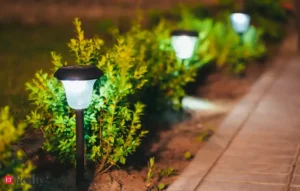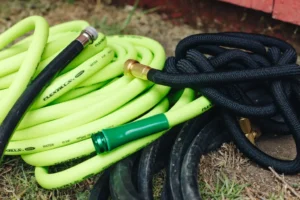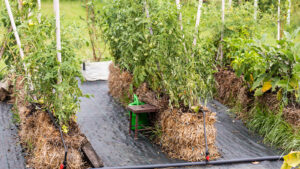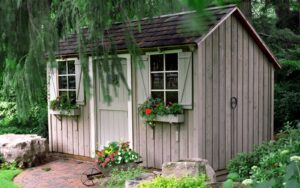Transform Your Outdoor Space: Creative Cinder Block Garden Ideas
Cinder blocks—those humble, utilitarian concrete forms—have undergone a remarkable renaissance in the world of garden design. Once relegated to construction sites and foundation walls, these versatile building materials have emerged as an affordable, durable, and surprisingly versatile medium for creative landscaping projects. Whether you’re working with a limited budget, tight space constraints, or simply appreciate industrial-modern aesthetics, cinder blocks offer nearly limitless possibilities for transforming your outdoor environment.
Why Cinder Blocks Are Revolutionizing DIY Landscaping
Before diving into specific project ideas, let’s understand why cinder blocks have become increasingly popular among both amateur gardeners and professional landscapers:
Affordability: At just a few dollars per block, they represent one of the most cost-effective building materials available for landscaping projects.
Durability: Designed to withstand structural pressure and weather elements, cinder blocks can endure for decades with minimal maintenance—making them ideal for long-term garden installations.
Versatility: The hollow core design serves multiple functions—from creating planting pockets to reducing weight and providing drainage.
Accessibility: Unlike specialized landscaping materials, cinder blocks are readily available at any home improvement store, with no special ordering required.
Sustainability: Using cinder blocks can be an environmentally conscious choice when repurposing used blocks or selecting those made with recycled materials.
Now let’s explore how these practical building blocks can transform your outdoor space through creative applications and thoughtful design.
Transformative Landscaping Ideas Using Cinder Blocks
1. Multi-Level Raised Garden Beds
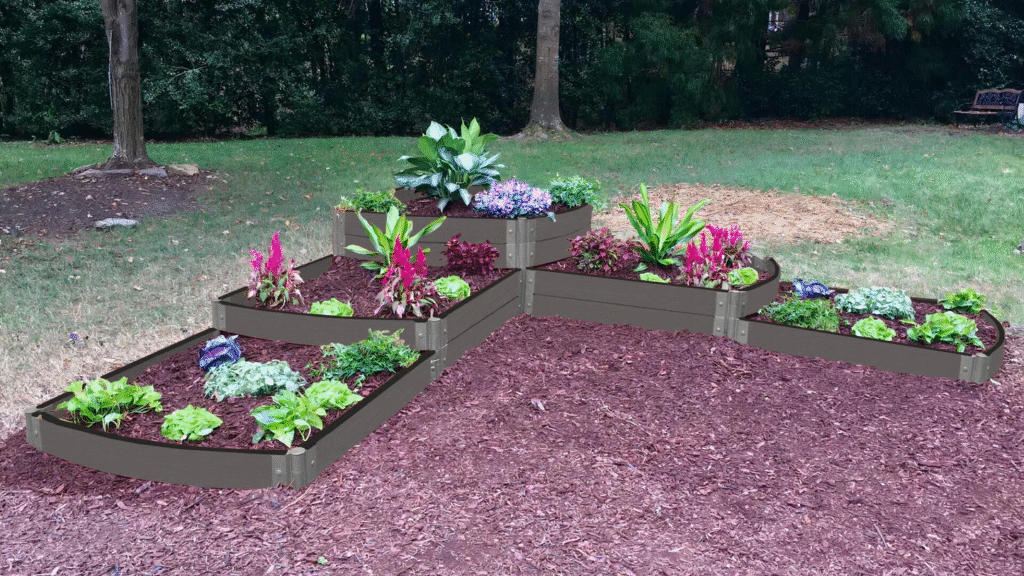
One of the most practical applications for cinder blocks in the garden is creating raised beds. Unlike wooden beds that eventually rot, concrete block beds can last indefinitely while providing excellent insulation for plant roots.
Step-by-Step Approach:
- Select a level area with good sun exposure
- Outline your desired bed shape using string or garden hose
- Remove grass or vegetation and level the ground
- Arrange cinder blocks in your desired configuration
- Consider staggering joints for better stability
- Fill hollow cores with soil for additional planting space
- Line the interior with landscape fabric if desired
- Fill with high-quality garden soil
Expert Tip: For a more polished appearance, consider painting the exterior blocks with exterior masonry paint in complementary colors to your home or garden theme.
2. Decorative Cinder Block Patio Walls
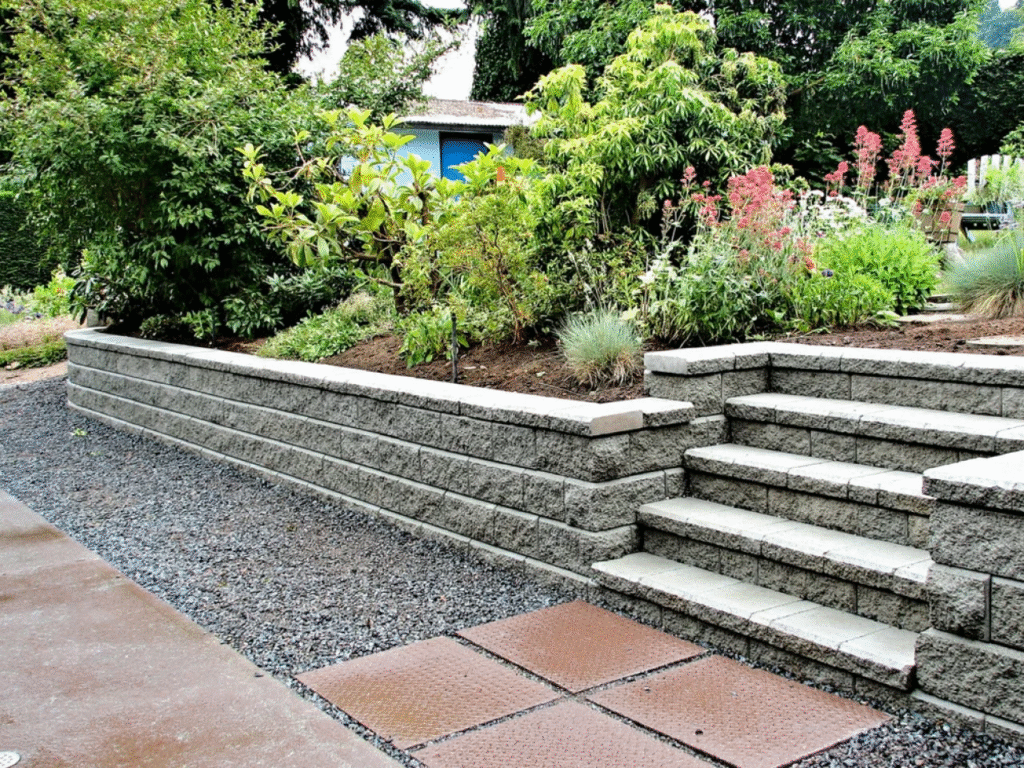
Patio walls serve multiple functions: defining space, creating privacy, blocking wind, and adding visual interest. Cinder blocks provide an ideal foundation for creating distinctive patio boundaries that reflect your personal style.
Design Variations:
- Standard Stacked Wall: Simple, clean lines for a modern aesthetic
- Pattern Wall: Alternating block positions to create openings for light filtration
- Living Wall: Incorporating planting spaces within the wall structure
- Gabion-Style: Filling wire cages with cinder blocks and decorative stones
- Painted Mural Wall: Using exterior-grade paint to create artistic designs
Materials Needed:
- Cinder blocks (standard 8×8×16″ or decorative options)
- Construction adhesive or mortar
- Level and measuring tape
- Concrete footer material (if creating a permanent structure)
- Exterior paint (optional)
- Capstones for finishing the top (optional)
Common Mistake to Avoid: Skipping the foundation work. Even low decorative walls benefit from proper ground preparation to prevent shifting and tilting over time.
3. Innovative Cinder Block Planters
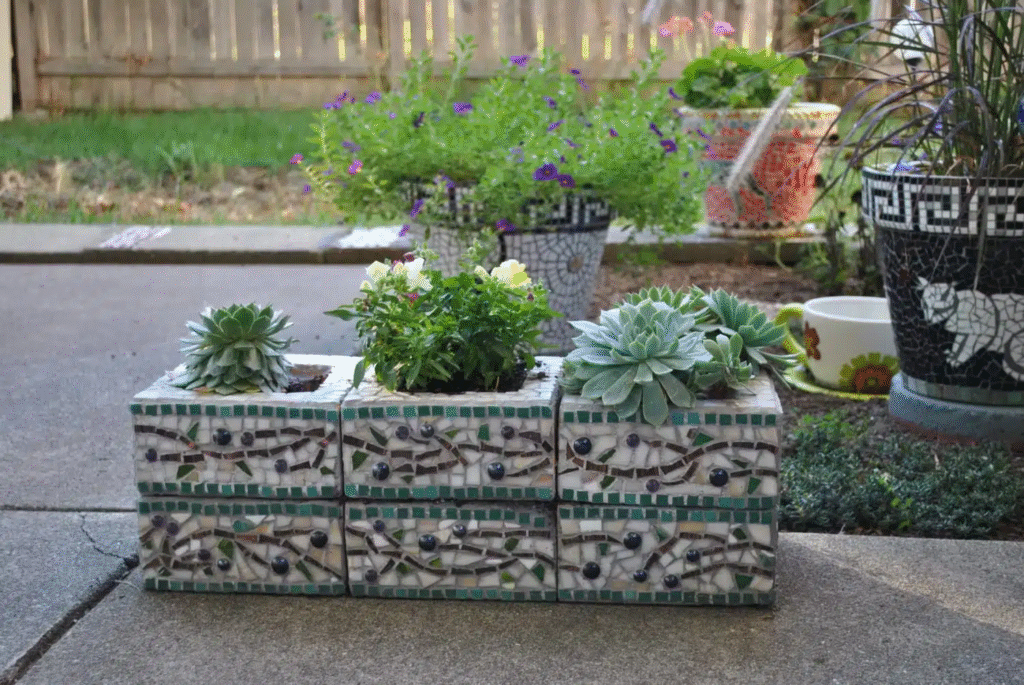
The hollow cores and stackable nature of cinder blocks make them perfect for creating unique container gardens that can be configured in countless ways.
Creative Configurations:
- Vertical Garden Tower: Stacking blocks with openings facing outward
- Staggered Planter Wall: Creating a stepped effect with multiple planting pockets
- Honeycomb Arrangement: Placing blocks in a hexagonal pattern
- Bench-Planter Combination: Incorporating seating with surrounding plantings
- Mobile Planters: Adding casters to individual block planters for flexibility
Plant Selection for Cinder Block Gardens:
- For Hollow Cores: Compact herbs, succulents, alpine strawberries, compact flowers
- For Larger Beds: Vegetables, ornamental grasses, perennial flowers, small shrubs
- For Vertical Applications: Trailing plants like creeping thyme, ivy, or cascading flowers
Design Tip: Consider the microclimate created by concrete blocks—they absorb heat during the day and release it slowly at night, potentially extending your growing season for heat-loving plants.
Building with Cinder Blocks in Your Backyard
4. Outdoor Kitchen and Grill Stations
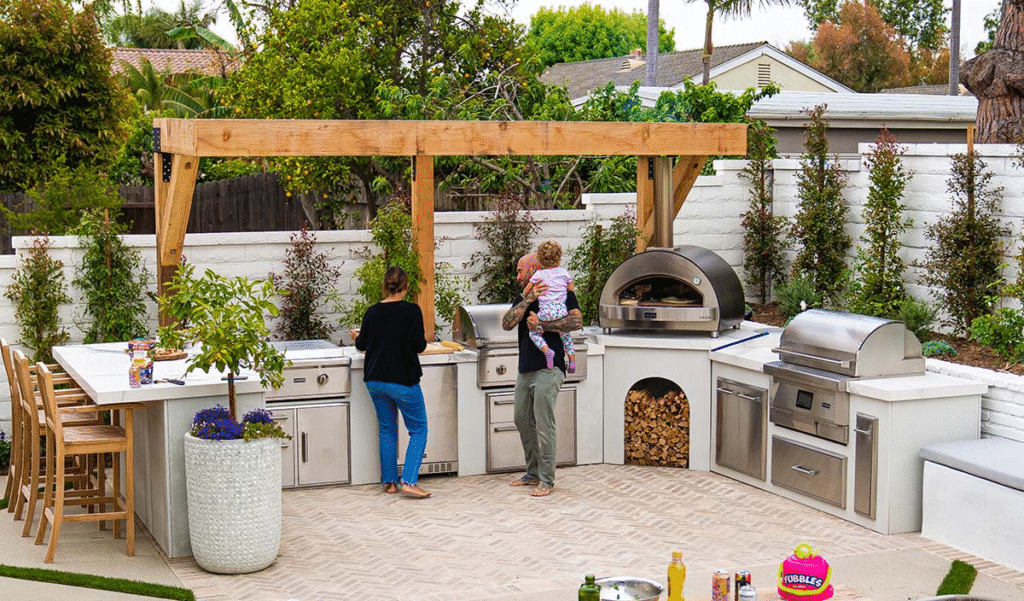
For the ultimate in backyard entertainment, consider using cinder blocks to create a permanent outdoor cooking area. The fire-resistant nature of concrete makes these blocks perfect for constructing grill surrounds, pizza ovens, or complete outdoor kitchen stations.
Essential Components:
- Foundation pad (concrete or compacted gravel)
- Block structure sized to accommodate your grill or cooking equipment
- Heat-resistant countertop material (concrete, stone, or specialty tile)
- Storage areas for utensils and cooking supplies
- Optional roof or pergola for weather protection
Safety Considerations:
- Maintain appropriate clearance from combustible materials
- Include proper ventilation if enclosing cooking equipment
- Consider using fire-rated concrete blocks for areas directly exposed to high heat
- Seal blocks in food preparation areas to prevent moisture absorption
5. Modern Fire Pit Designs
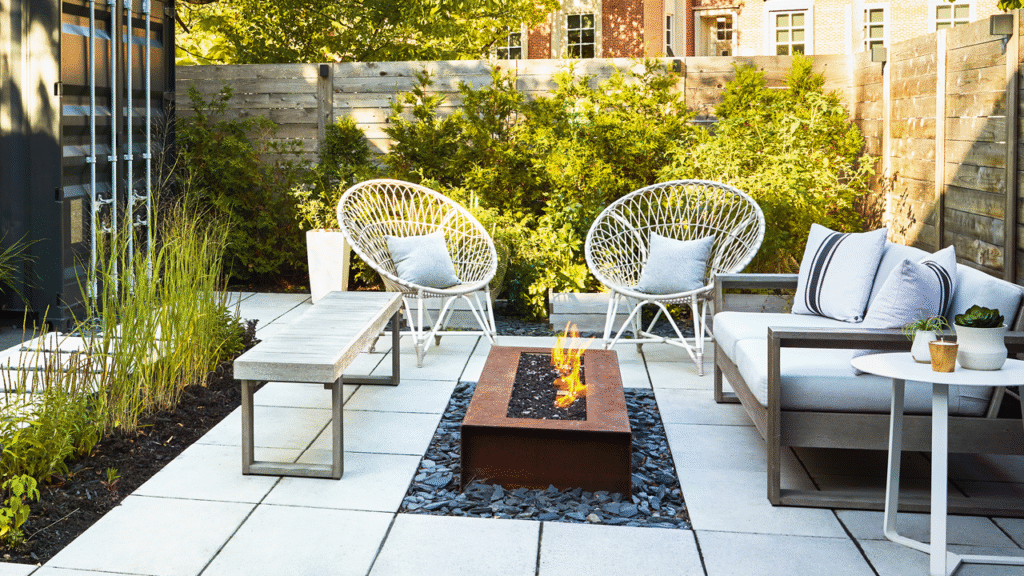
A fire pit creates a natural gathering point in any backyard, and cinder blocks provide an economical way to build a safe, durable fire feature. From simple ring designs to elaborate seating areas, concrete blocks offer structural integrity with minimal investment.
Construction Basics:
- Select a location at least 10 feet from structures and overhanging trees
- Excavate a circular or square area 3-4 inches deep
- Add a layer of gravel for drainage
- Arrange first layer of cinder blocks in desired shape
- Add metal fire ring inside if desired for additional protection
- Stack additional layers using masonry adhesive between courses
- Consider adding decorative capstones for comfortable seating
- Add fire-resistant material (lava rock, fire glass) to the center
Expert Insight: “For fire features, I recommend using solid concrete blocks or filling hollow blocks with concrete for the first course to provide better heat resistance and prevent cracking,” advises Marco Hidalgo, landscape architect and outdoor fire feature specialist.
6. Garden Steps and Pathways
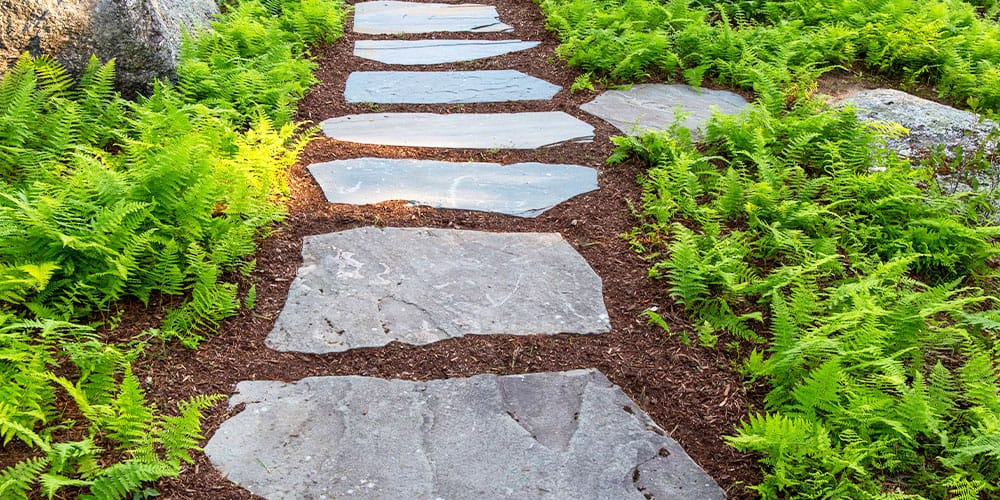
Navigating sloped landscapes can be challenging, but cinder blocks offer a sturdy solution for creating steps and defined pathways. Their uniform size makes calculation and installation straightforward, while their texture provides good traction in wet conditions.
Step Construction:
- Calculate rise and run for comfortable stepping (6-7″ rise ideal)
- Excavate and compact soil for stable base
- Consider adding drainage material beneath for water management
- Install blocks with minimal gaps, using landscape adhesive for stability
- Fill hollow cores with soil and plant groundcover for a softer appearance
- Add lighting along edges for nighttime safety
Pathway Options:
- Buried blocks creating a textured walking surface
- Blocks laid on edge to create border-defined gravel paths
- Staggered block stepping stones through garden areas
- Mosaic effect by combining blocks with other paving materials
Concrete Block Landscaping Ideas for Functional Spaces
7. Children’s Play Areas
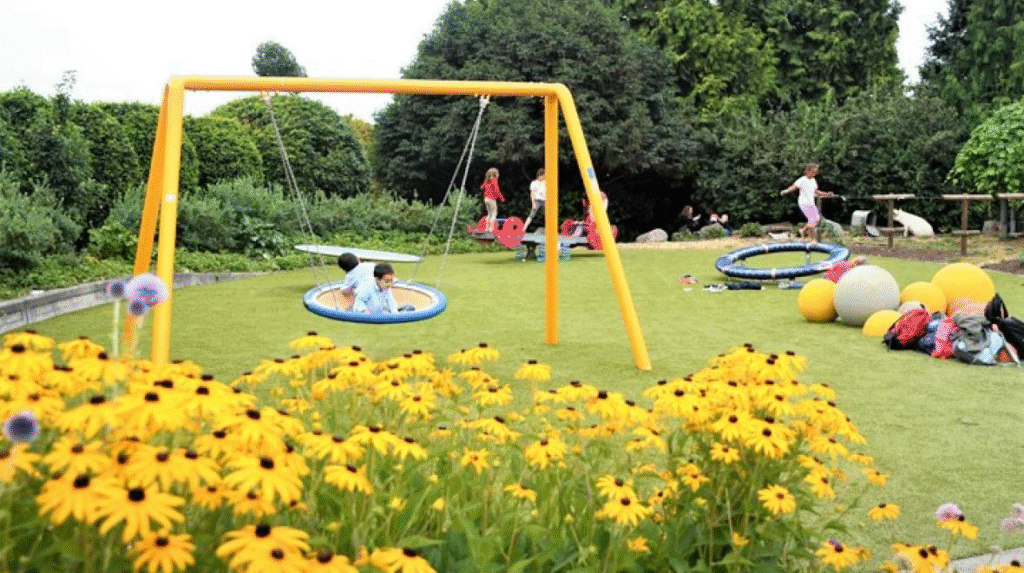
The modularity of cinder blocks makes them ideal for creating safe, engaging play spaces for children. From building blocks to game zones, concrete blocks can be incorporated into family-friendly landscape designs.
Play Space Applications:
- Giant building blocks (painted and sealed for safety)
- Hopscotch or game boards painted on flat block surfaces
- Low maze walls for exploration
- Tic-tac-toe boards with movable painted stone pieces
- Sand or water table foundations
- Balance beam pathways
Safety Priorities:
- Sand or round all sharp edges
- Seal surfaces to prevent concrete abrasion
- Use construction adhesive to secure stacked elements
- Keep heights appropriate for age groups
- Consider colorful non-slip paint for visual appeal and safety
8. Adaptive Garden Spaces for Accessibility
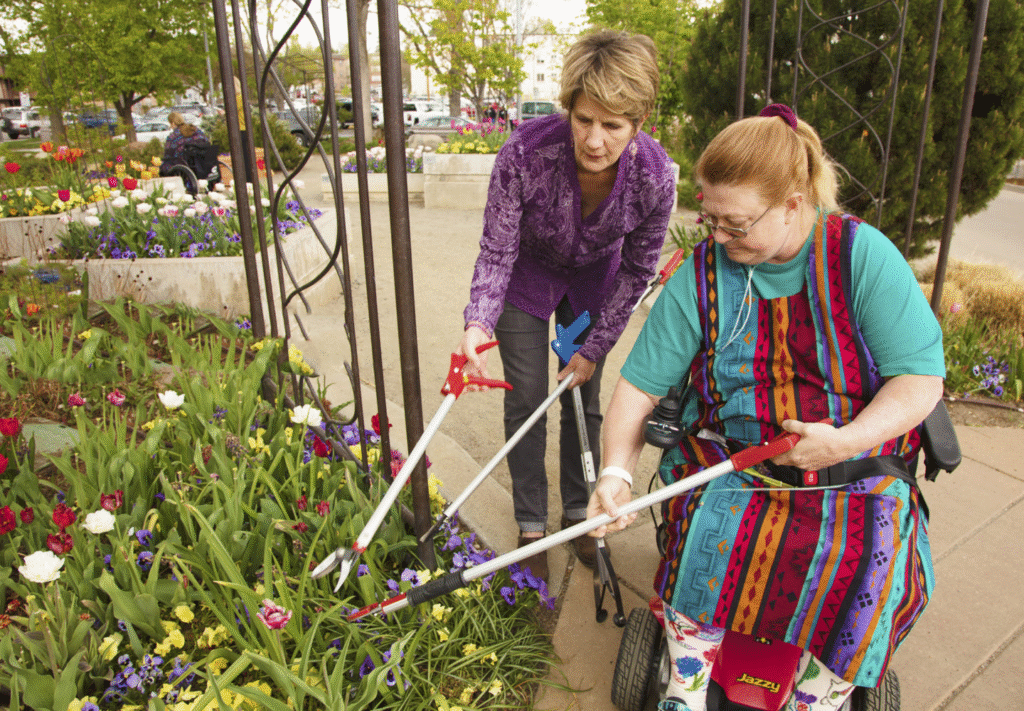
One often overlooked benefit of cinder block gardening is the potential for creating accessible growing spaces. The ability to build at various heights makes these blocks ideal for gardeners with mobility considerations or physical limitations.
Accessibility Designs:
- Raised beds at wheelchair height (typically 24-36″ high)
- Wide pathways between block structures (minimum 36″ clearance)
- Smooth-surfaced cap blocks for comfortable seating edges
- Tool storage incorporated into the structure
- Irrigation systems built into the design to minimize maintenance
- Vertical growing spaces to reduce reaching and bending
Community Garden Director Joan Williams notes: “Our cinder block raised beds have allowed us to welcome gardeners of all ages and abilities. The customizable height and durable nature make them perfect for shared community spaces where inclusive design is essential.”
9. Retaining Walls and Terracing Solutions
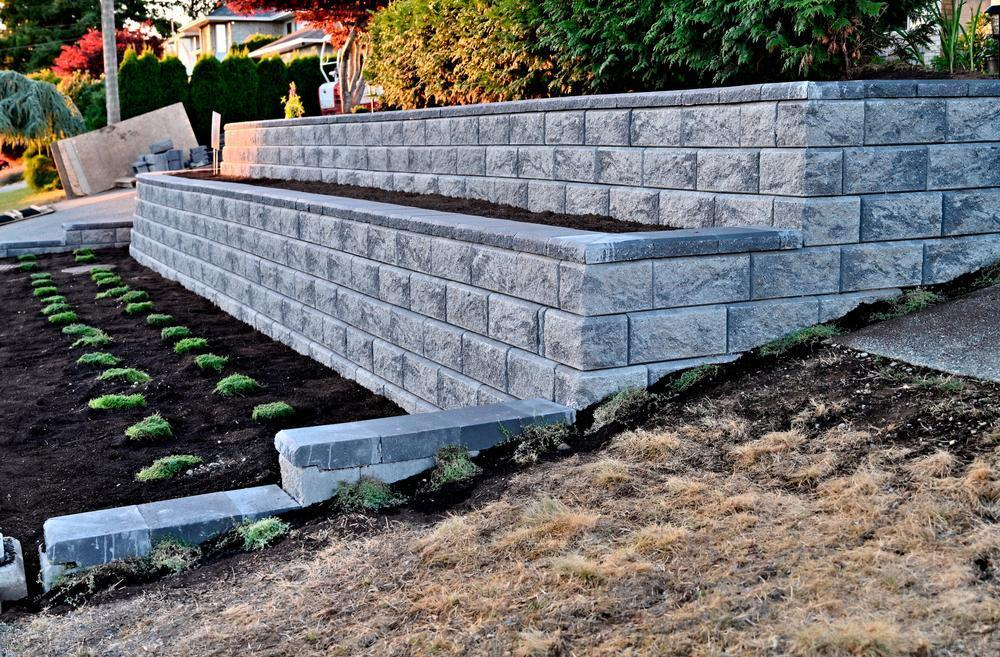
For properties with significant grade changes, cinder blocks offer an affordable solution for creating retaining walls and terraced garden spaces. Their weight and interlocking potential provide the structural integrity needed to hold back soil while creating visually interesting elevations.
Technical Considerations:
- Professional consultation recommended for walls over 3 feet high
- Proper drainage systems essential (perforated pipe, gravel backfill)
- Stepped footings for slopes greater than 2:1
- Reinforcement with rebar for taller applications
- Battered (angled) construction for improved stability
- Waterproofing measures for walls against house foundations
Design Opportunities:
- Integrated stairways between terraced levels
- Planting pockets within the wall face
- Waterfall or water feature incorporation
- Multiple levels for visual interest
- Specialty block patterns for decorative appeal
Common Mistake: “The biggest error I see in DIY retaining walls is inadequate drainage behind the structure,” explains civil engineer Maria Jimenez. “Always include a proper drainage layer and weep holes to prevent hydrostatic pressure from compromising your wall.”
Elevating Your Cinder Block Landscape Design
10. Artistic and Decorative Applications
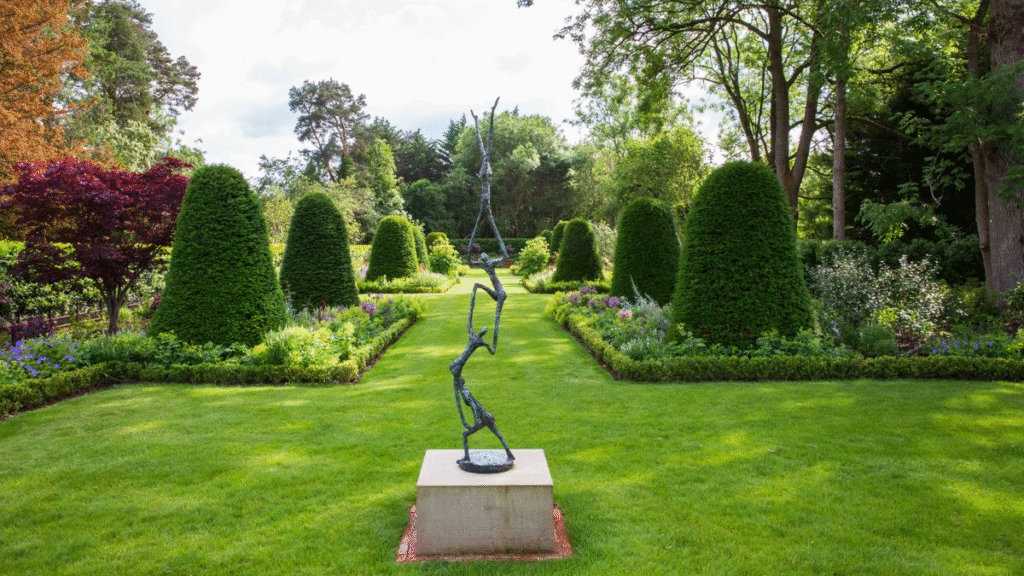
Beyond purely functional uses, cinder blocks offer a canvas for creative expression in the landscape. Their grid-like structure and neutral color provide an excellent foundation for artistic interventions.
Decorative Techniques:
- Geometric painting patterns
- Mosaic tile application
- Embedded glass or stone elements
- Stenciled designs
- Night lighting effects through hollow cores
- Sculptural stacking in non-traditional arrangements
Inspiration from Professional Landscapes: “I’ve been incorporating cinder blocks into high-end designs for clients who appreciate the juxtaposition of industrial materials with lush plantings,” shares landscape designer Thomas Wu. “The key is thoughtful arrangement and strategic plant pairings to soften the concrete elements.”
11. Sustainable Practices with Concrete Blocks
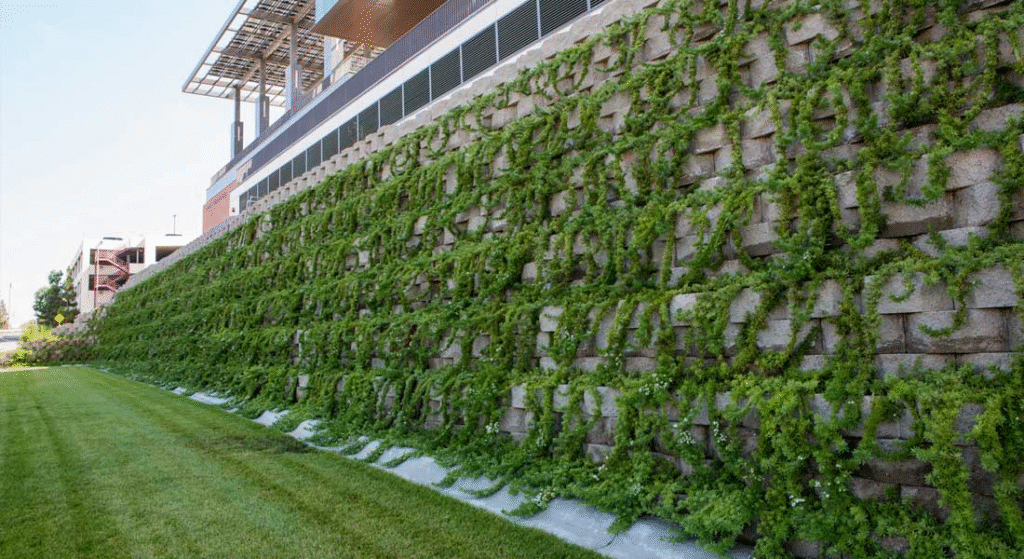
For environmentally conscious gardeners, cinder blocks offer several sustainable advantages. Their longevity reduces replacement needs, while their thermal mass properties can create beneficial microclimates in the garden.
Eco-Friendly Applications:
- Rainwater harvesting systems with block cistern supports
- Thermal mass walls for extending growing seasons
- Composting stations with adjustable aeration
- Hugelkultur-inspired raised beds combining blocks with organic material
- Habitat creation with purposeful gaps for beneficial insects
- Greywater filtering systems using blocks as structural elements
Environmental Consideration: Look for manufacturers using recycled materials in their concrete block production, or source reclaimed blocks from demolition projects to further reduce environmental impact.
Planning Your Cinder Block Garden Project
Material Selection and Preparation
Types of Concrete Blocks:
- Standard cinder blocks (8×8×16″)
- Half blocks for more design flexibility
- Decorative face blocks (textured, colored, or patterned)
- Specialty shapes (corners, caps, solid)
- Lightweight options for easier handling
Tools for Success:
- Heavy-duty gloves
- Safety glasses
- Measuring tape and level
- Rubber mallet
- Masonry saw or chisel (for custom cuts)
- Landscape fabric
- Construction adhesive
- Exterior masonry paint and sealer
Design Principles for Cinder Block Gardens
For cohesive landscape integration, consider these design fundamentals:
Scale and Proportion: Ensure your block structures relate appropriately to surrounding elements and overall garden size.
Rhythm and Repetition: Create visual harmony by repeating block patterns or arrangements throughout the landscape.
Balance: Consider both symmetrical approaches (formal gardens) and asymmetrical arrangements (naturalistic settings).
Focal Points: Use distinctive block configurations or colored elements to draw the eye to specific garden areas.
Texture Contrasts: Pair the rough texture of concrete with smooth plantings, polished stones, or glass elements for visual interest.
Color Theory: Consider how the gray of natural concrete will contrast with plant material or how painted blocks can complement your overall color scheme.
Maintenance and Longevity Considerations
One of the primary advantages of cinder block garden features is their minimal maintenance requirements. However, some ongoing care will maximize their lifespan and appearance:
Seasonal Inspection: Check for cracking, shifting, or water damage, particularly after freeze-thaw cycles.
Drainage Management: Ensure that drainage systems remain clear, especially for retaining walls and raised beds.
Surface Cleaning: Periodic power washing can remove algae or moss that may develop in shady locations.
Paint Refreshing: Painted blocks may need touch-ups every 2-3 years depending on climate exposure.
Plant Management: Monitor root growth from aggressive plants that might compromise block stability over time.
Winter Protection: In severe climate zones, consider covering exposed hollow cores during winter to prevent freeze damage.
Conclusion: Building Garden Dreams One Block at a Time
The beauty of cinder block gardening lies in its accessibility—both in terms of cost and ease of implementation. From simple weekend projects to elaborate landscape transformations, these versatile building units offer a pathway for gardeners at any skill level to create functional, personal outdoor spaces.
Whether you embrace the industrial aesthetic of raw concrete or use blocks as a hidden structural element beneath a more ornate facade, cinder blocks provide a reliable foundation for garden innovation. By combining thoughtful design with proper construction techniques, your cinder block garden features can become signature elements that enhance your outdoor environment for years to come.
As you plan your next landscape project, consider how these humble building materials might solve a design challenge or create new opportunities in your garden space. With minimal investment and basic tools, you can join the growing community of gardeners discovering the transformative potential of cinder block landscaping.


